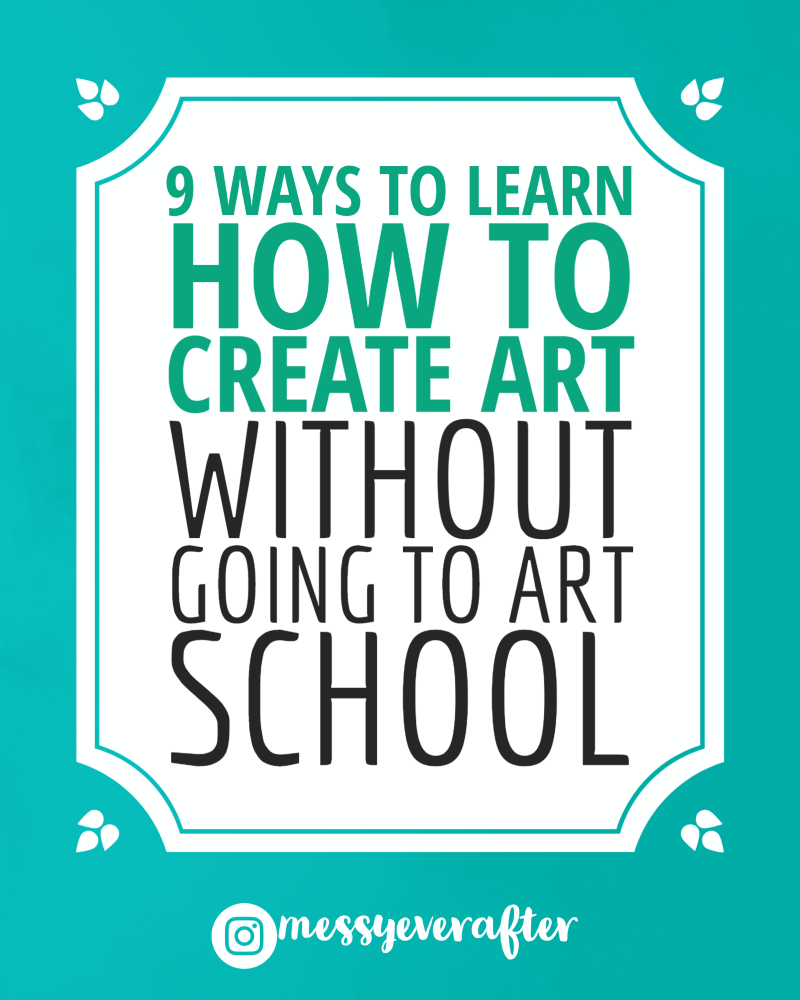You don’t need to spend a bunch of money to learn how to create art.
In fact, you can learn how to make art for free. Also, you don’t need a formal art education to become a professional artist. I am a lifelong learner, and I am always trying to find cheap ways to be a better artist. I have explored many options to learn how to create the art I want, and I want to share those options with you.
Just as a disclaimer, I did go to art school. I have had a lot of formal training in the arts, but I do not have an arts degree. I took three semesters of college art courses before dropping out of the program to pursue creative writing and psychology. (Read my last post: You Don’t Need Art School to be an Artist) TLDR, the art program at my school didn’t give me the skills I wanted, so I have done a lot of independent learning after school. This independent path can be just as robust as formal art classes, and possibly even more gratifying.
I have put together a list of resources for you to increase your abilities without enrolling in an art program (because honestly, a competed BFA or MFA art degree is a horrible investment for most of us).
1. YouTube
I LOVE YouTube.
You can find anything on you want and plenty you don’t want on YouTube. I have spent a lot of time browsing tutorial videos for everything in my life. Hair styles, makeup, recipes, home improvement, fashion, health, and a crap-ton of art videos. It’s free!
You can search for how to draw. How to paint. Drawing basics. Fluid art. Watercolors. Oil paints. Whatever you want! YouTube probably has it. If one video sucks, find another. There are plenty to choose from.
When I started to learn more about watercolors this was one of the first videos I watched. You can find really high-quality tutorials. Start there.
2. Skillshare
Although Skillshare isn’t free, it isn’t expensive either. This is a subscription service with great tutorial videos. You can learn from independent artists from a wide variety of disciplines. Skillshare contains more than art classes, so a subscription could help you in many ways.
Browse art classes here.
3. Drawspace
Drawspace is similar to Skillshare but is tailored to artists. It has free options as well as membership options for courses.
Explore lessons from Drawspace here.
4. Artyfactory.com
If you like step-by-step written instructions while you learn, check out Arty Factory for a variety of art lessons. In my opinion, it’s not as convenient as the video tutorials from the first three options, but it’s another way to learn and it’s free.
You can also purchase art technique books with similar written instructions. They are great resources. I personally own this one* for figure drawing and I had a lot of fun as a teen working through it. (*affiliate link: I earn commissions through sales from this link)
5. Nature and the world around you.
Old school, I know.
I first started learning how to draw from observation by studying my pet parakeets and cockatiels as a kid. I would just sit, stare, draw, stare, sit some more, draw, erase, stare, draw, stand back, evaluate, and draw some more. Nature can be one of the best teachers. Pick something, observe it, and put pencil to paper.
It takes a long time to be able to draw things just from your head. Using reference photos or drawing something right in front of you is the best way to work on your skills. Otherwise, how will you know what to correct if you don’t have something to compare it to?
The best thing about this option is that it doesn’t require electricity, the internet, OR money.
For those who like having a teacher:
I know not everyone enjoys self-guided learning. If you are the type of person that craves classroom settings the next few options are for you.
6. Community Education
If you live in a decent-sized city, chances are good you have access to community education classes for art. These classes are often very affordable and are taught by local artists in the community.
Check out your city’s local government or school websites to find details. A quick google search for “(city name) community education” works well.
7. Community College Courses
You don’t necessarily need to enroll in an art program or pursue an art degree to take art classes at local colleges. You can simply choose a class that looks interesting and enroll. Intro drawing and painting classes give you an excellent base knowledge of tools and techniques that you’ll use for many years.
Community colleges are usually more affordable than Universities, and some even have discounts for non-traditional learners.
8. Workshops at Art and Craft Stores
Some arts and crafts supplies stores will host classes and workshops for artists and crafters. The focus of the classes will likely be on specific products they want you to buy, but you’ll get to play with supplies and have fun. Though, this isn’t the best option if you want to sit down and learn traditional art techniques.
9. Painting Parties
If you just want to have some fun with art for a night, local painting parties are pretty great. I have attended and instructed painting parties. If you are a beginner, you’ll learn how acrylic paint behaves and get step-by-step guidance to start and finish a piece of art.
It’s laid back, and you don’t need to invest in any supplies to get started or have ANY experience with art. Also–you get food and drinks 🙂
***
I want to make sure you know you don’t have to go to art school or spend a bunch of money to be an artist or play with art supplies. Art is for everyone.
-Kelly

